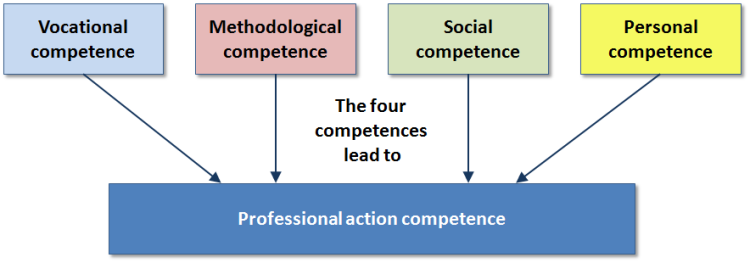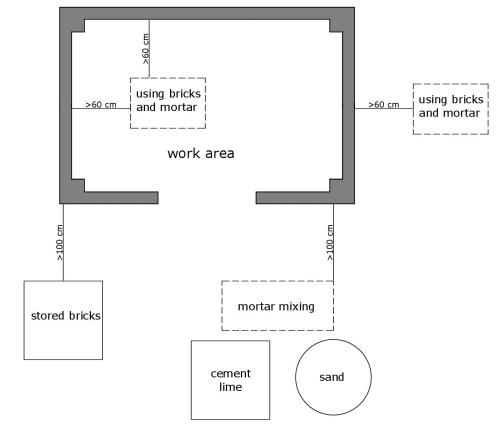4. Action-orientation
The target of any action-oriented training is: professional action competence.
Various competencies are incorporated into this:

The target of any action-oriented training is: professional action competence.
Various competencies are incorporated into this:

Action-oriented training is holistic with the following aspects:

Action-oriented training is trainee-active, i.e. the trainer tries to give the trainee as little instructions as possible and to let them explore, test, discover, discuss, plan and reject as much as possible. Self-employment is an indispensable prerequisite for self-employment.
he focus of the action-oriented training is the production of action products (= demonstrable material and/or mental results of the training work). Trainees can identify themselves with these products. However, they also provide an opportunity for the trainees themselves to evaluate and criticize the training work.

Action-oriented training endeavours to make subjective trainee interests the starting point of the training. Action-oriented training creates the freedom in which trainees can become aware of their interests when dealing with new topics and tasks. However, it also creates a forum for the publication and criticism of subjective interests.
Action-oriented training involves the trainees right from the start in the planning, implementation and evaluation of the training. The trainer cannot withdraw to curriculum guidelines or textbook topics, but must deal with the trainees in an open discourse.


Action-oriented training leads to the opening of the educational institution:

In action-oriented trainings, an attempt is made to bring headwork and manual work into a balanced relationship. This gives a dynamic interaction between manual and mental work that accompanies the entire learning process.

Action-oriented didactics refers to an activating didactic-methodical learning arrangement. It encompasses the concept of independence and self-organisation in equal measure. Action-oriented didactics aims at the extensive self-development of the subject matter. It is characterized by a specific combination of instruction by the trainer (external control) and independence (self-control) of the trainees.

Action-oriented didactics has the following characteristics:

Learning to act under conditions of authenticity brings the trainees to real action or to the implementation of their planning as well as to the implementation of their measures with all consequences. Training goals and contents are not only achieved theoretically, but holistically, practically, with head, heart and hand. Experiencing and trying something for themselves is considered the best way for sustainable learning: approx. 90 percent of what trainees themselves consciously do remains in their memory, so that they can call it up at any time.

As a trainer, however, it should be kept in mind that solutions to the problems that arise in action-oriented training cannot be postponed. There is no dead-talking or hiding behind contributions to the discussion. As a rule, immediate, authentic and immediate action is required. There is also no month-long delay between action and result, the consequences or success of the action are immediately visible and noticeable for everyone.
Licensed under the Creative Commons Attribution Share Alike License 4.0